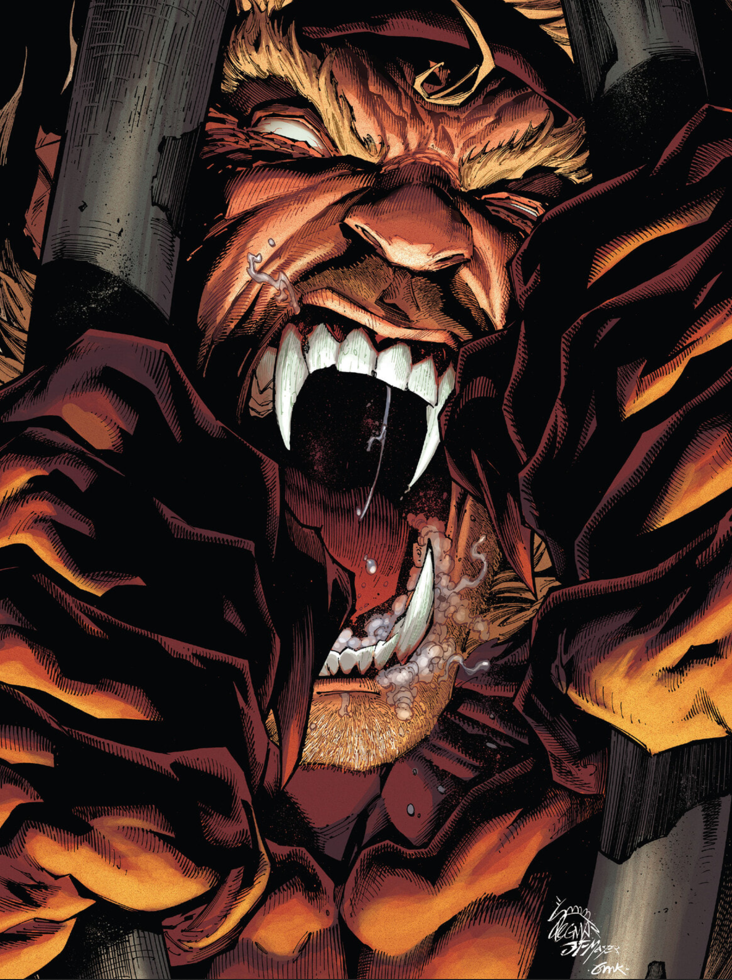
[cover by Ryan Stegman, JP Mayer, Frank Martin Jr.]
There are just so many damn devils in paradise.
And in Sabretooth #2, we see their potential for mayhem multiply—while the mini remains at a slow burn that is pitch-perfect for the gradual but compelling unfolding of its mysteries. The motivating circumstances for each character, except perhaps Sabretooth himself, are as yet not entirely clear, and La Valle is an expert at keeping us hooked and wanting to know more.
Most prominently, we get Charles and Erik’s (expected) superficial reasoning for condemning those who don’t play by the three laws of Krakoa, but oddly, neither believes they’re actually incarcerating anyone, even Sabretooth. Granted, while Victor was handed an interminable sentence in House of X #6, the others are given significantly shorter (but still indeterminate) sentences. However, Charles and Erik believe they will simply abide in some kind of contemplative quietude of the soul, earnestly spending their timeless time in exile reflecting on their misdeeds to learn better.
But even here, if this were actually what the inmates found themselves experiencing, and for all that Charles is so often on the wrong side of ethical issues—almost entirely out of thoughtlessness, not malevolence—there’s something off about his attitude in particular. Maybe it’s just the lingering aftertaste of Onslaught from Si Spurrier’s Way of X—or one could go back to the prickish way he initially interacted with Doug as his first Krakoan recruit way back in Powers of X #4!
Actually, don’t forget—at this point in the miniseries we are before Way of X! (Remember, not only are Nanny and Orphan-Maker not in the hole yet, we also see Mole bumping into Apocalypse this issue! Mentioning his High Lord business puts this right before X of Swords.) So, yeah, let’s blame Onslaught!
The mystery arising out of the lack of clarity on much of Xavier’s executive reasoning resonates darkly with the five new prisoners not having a clear read on each other either. Just Melter’s vague story that incriminates him of no greater wrongdoing than melting a Krakoan rock (surely not its only mineral form damaged since the nation’s founding, accidentally or otherwise!) and his ambiguous smile when pressed to explain further are more than enough to tell us that while we may know what particular law each broke, it’s going to be a bit before we fully understand the particulars—and to what degree they were self-incriminating, especially relative to prior standards set by our more well-known Krakoan favorites.
Perhaps bumbling lovebirds Charles and Erik simply have become corrupted by their nigh absolute power, each salving his weeping conscience with comforting blindfolds of righteous condescension and ignorance. Again—symptoms of Onslaught syndrome? Also, Mags comes across as surprisingly spineless here.
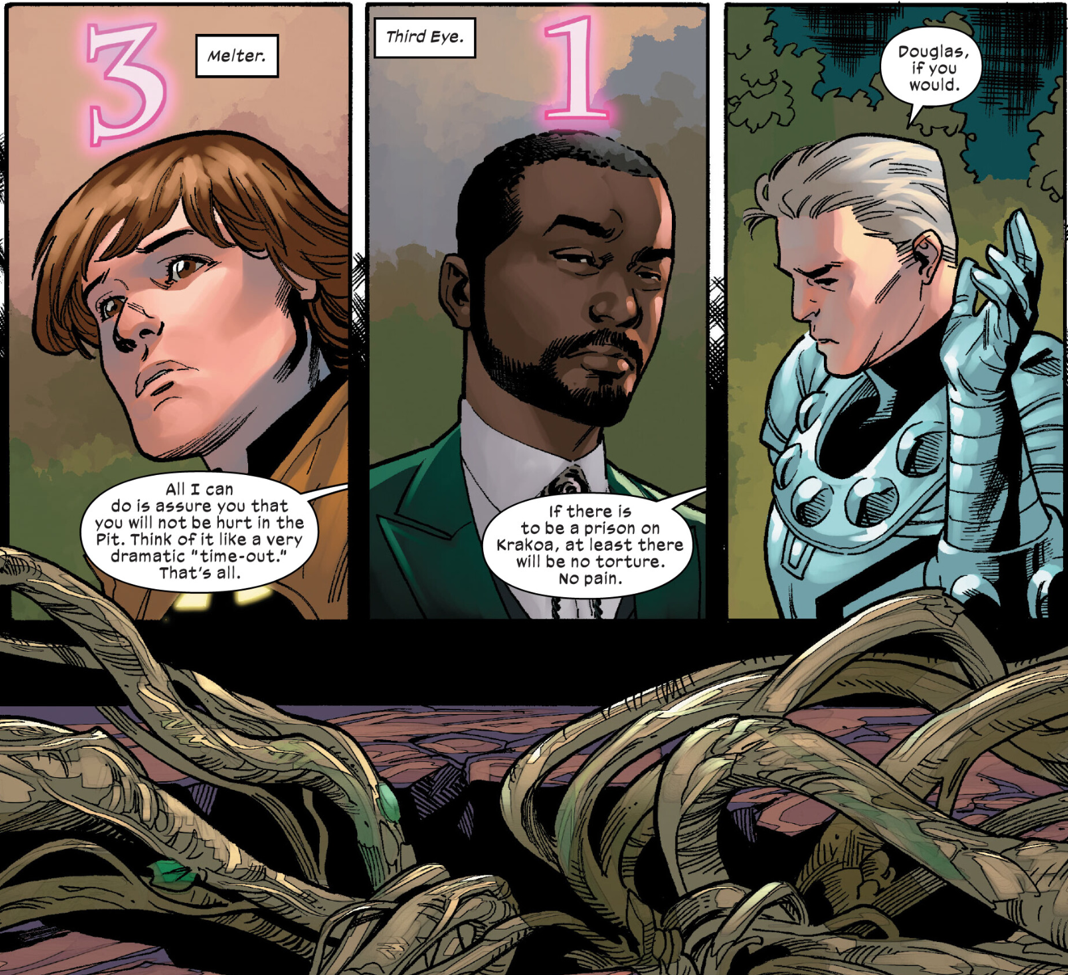
Onslaught or not, though, it’s unlikely that LaValle’s story is setting out to intersect explicitly with Spurrier’s. So I’m guessing that even if Onslaught business is partly to blame for Charles and Erik arrogantly condemning these five without even the rest of the QC around—there’s definitely something more going on. And by the end, we may be post-Inferno or at least post-Way of X.
In the interest of momentum, we’ll keep rolling for now but return below to this issue’s powerful epigraph.
First off, it’s a clever and useful bit of storytelling to have a glowing number above each of the condemned indicating which law of Krakoa they broke. And the silhouettes are obvious enough if you’ve recall last time: Nekra and Oya are guilty of murdering humans; Madison Jeffries and Melter have done something to disrespect the land/Krakoa’s body; and Third Eye has—what? Declared his intention to not make more mutants? This one seems weird! A refusal to reproduce has been criminalized now?
There must be something more going on here, but as with each of the crimes, we just don’t know the details.
What this tells me, though, along with the rest of this issue, is that this miniseries will not simply be a focus on Sabretooth—which is a real relief to me. Thank you, Mr. LaValle!
Indeed, the best moments in this issue belong to other people—starting with Doug and Krakoa.
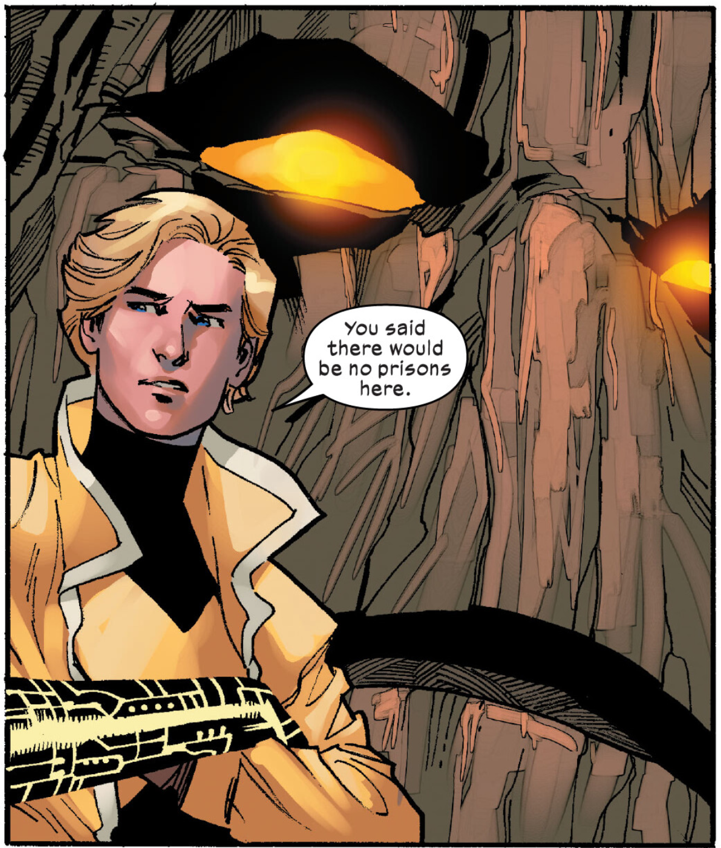
Of course, Leonard Kirk’s art with Rain Beredo’s colors remains another highlight. (Somewhat randomly, I’m reading the early 2000s JSA title in full for the first time, and even then Kirk was doing amazing work; he is simply one of the most consistent artists in the business—but truly, he is at his peak here.)
And I am dying to know what apparently righteous murderousness Nekra and Oya got up to.
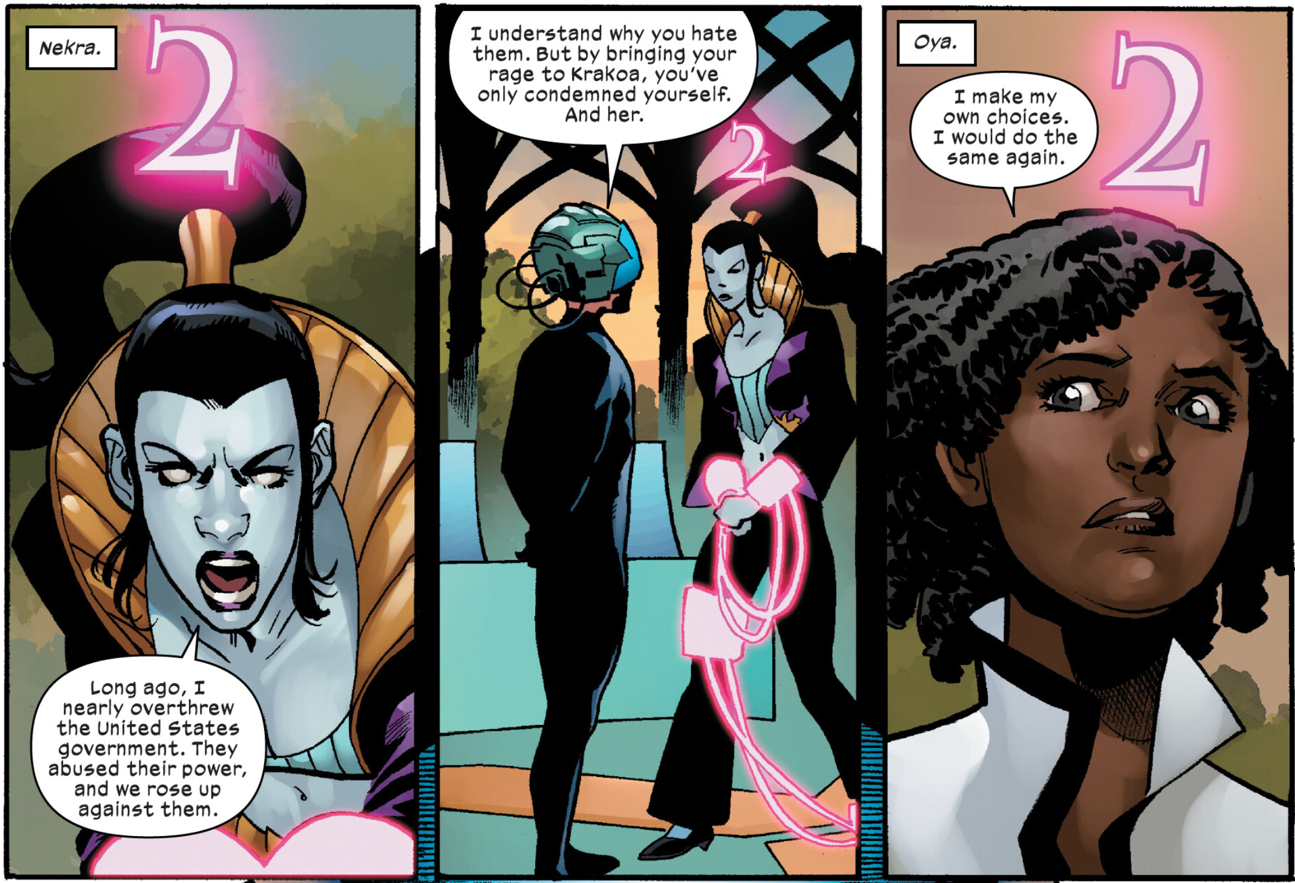
Were they working together? How did this start? Who were they gunning for? This is what I most want to find out.
But Victor LaValle’s original creation here, Third Eye, is no less a fascinating enigma, just more subtly so.
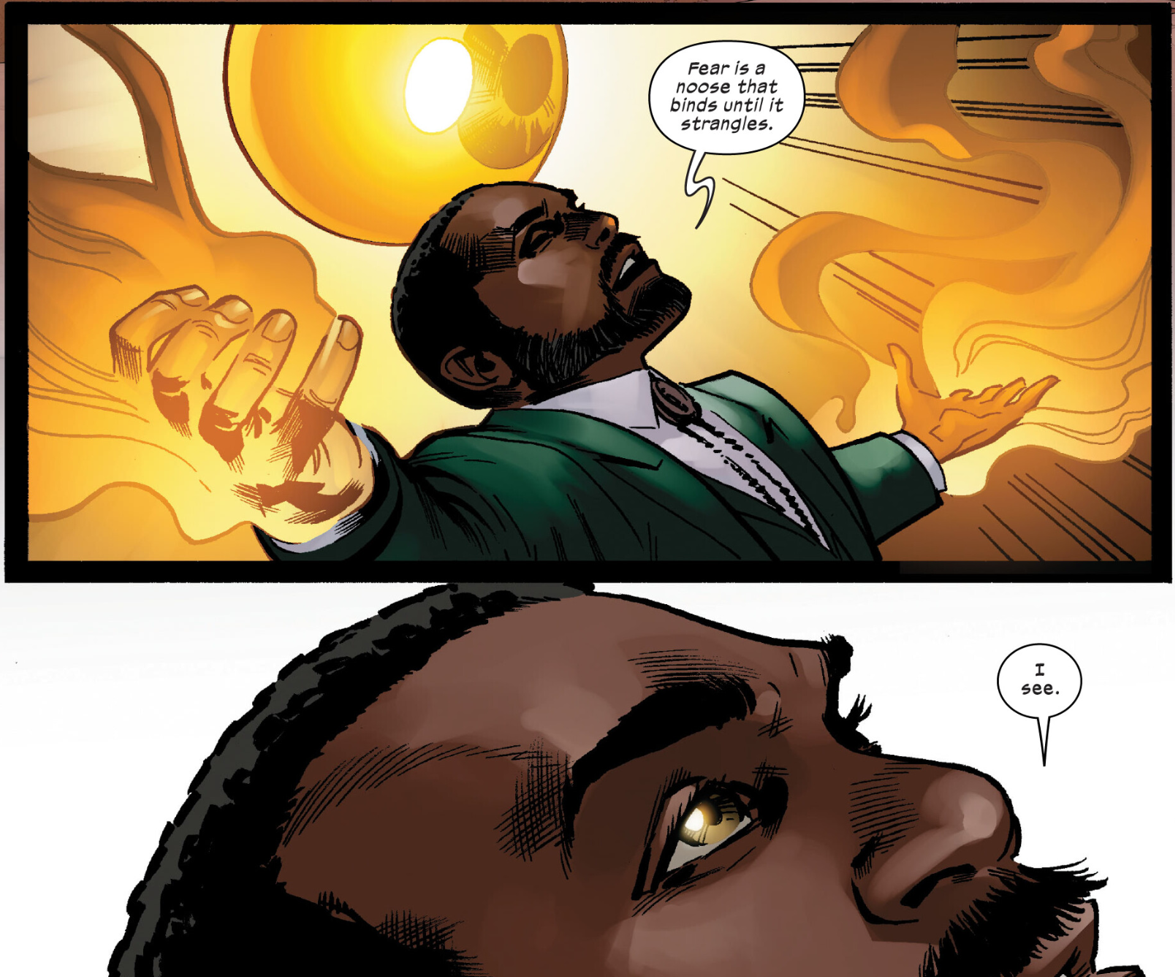
We always need more mutant magic users! And who does his third eye dig up? A real treasure!
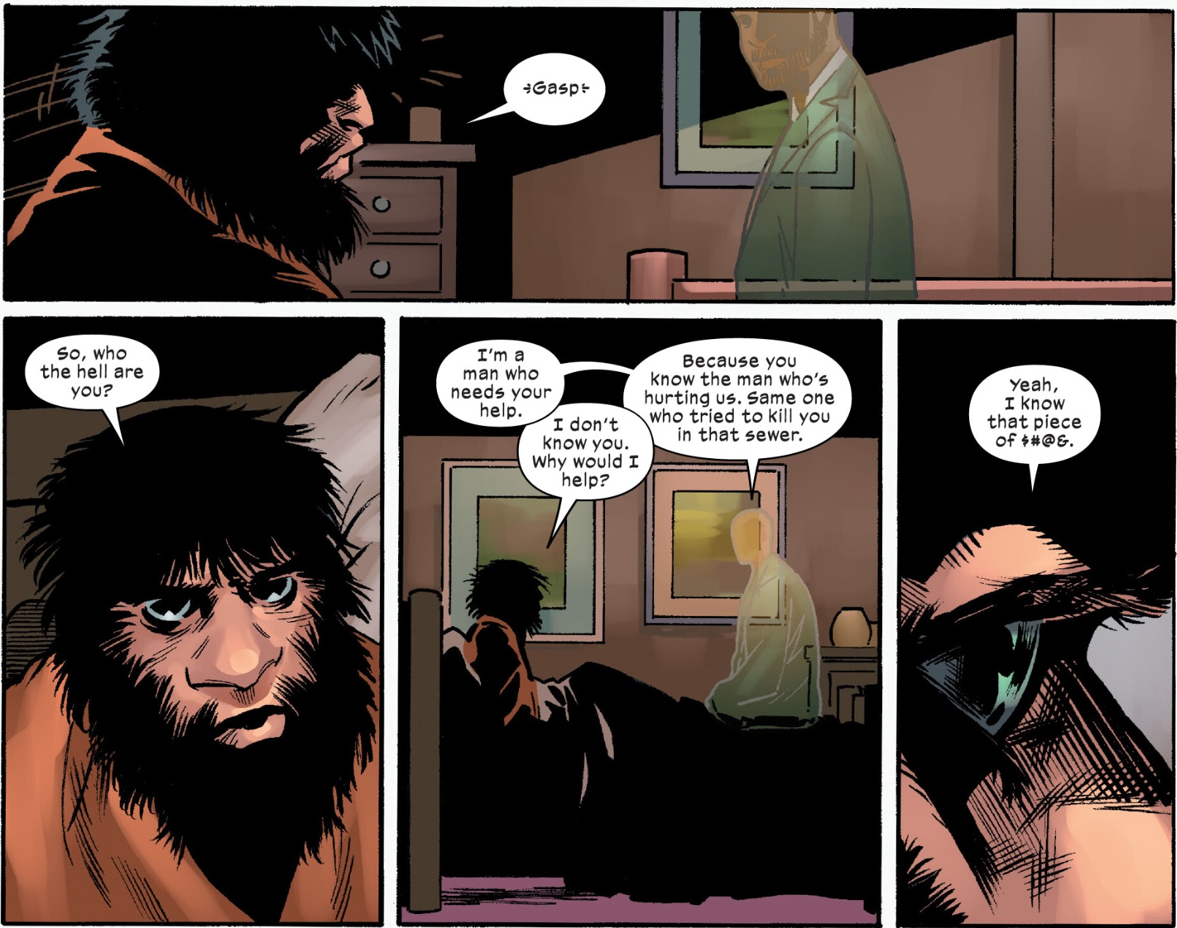
Mole—I don’t remember this guy either. But what a find. Not appearing until long after “Mutant Massacre,” this Massacre survivor, debuting in Louise Simonson’s X-Factor #51 (1990), was retconned in—and yep, alongside his poor buddy Chicken Wings, who hasn’t shown up since. Sabretooth indeed finished him off—but not Mole. Able to dematerialize matter, either briefly or permanently, Mole escaped just as he says, burrowing down through the earth as if it were so much foam. This too, however, is a retcon, as issue #53, from which comes the flashback panel showing Creed surprising him in the sewer, implies but doesn’t show that he in fact meets his end right there.
Incidentally, X-Factor #51 is also the ill-fated Opal Tanaka’s debut. (It’s not that she’s dead; she was just lame as a love interest—for a number of reasons! But after the first two years and some pointless revelations, she turned insufferable.) Oddly here, though, LaValle errs in identifying Warren as her beau. It was Bobby! So there’s a double error in this issue since Mole should really be looking at Iceman on Krakoa, not Angel, while having these rueful thoughts.
We also see what the Pit really looks like for the first time—about as dull as you’d expect, a bunch of roots, maybe gooey-looking vines, ensnaring the inmates, just as the original X-Men had been back in Giant-Size.
Inside the carceral dreaming, though, Madison Jeffries still manages to viscerally lucid dream his powers of near-universal technokinesis—the ability to manipulate, utilize and mechanize any inorganic material, psychokinetically. Although he’s not a reality warper, he can rearrange matter at the atomic level, which isn’t terribly far off; the radius and scope of possibility are just significantly more limited. Still, it’s pretty rad, and yet he’s been surprisingly unutilized. I think he just hasn’t had enough writers who’ve wanted to take time to do imaginative things for all his awesome potential. It doesn’t help that his heyday, while a solid six years, was confined to the post-Byrne Alpha Flight vol 1, though it ended with maybe not connubial bliss but maybe close enough, realistically, in his marriage to Diamond Lil.
Unfortunately, after an almost six-year retirement from comics history, starting with 1997’s Alpha Flight volume 2, Madison fell prey, twice consecutively, to stock manipulative villains, first to Zodiac then to Weapon X director Malcolm Colcord (who “revitalized” the program) in the awful, terrible, despicable Weapon X vol2 of the early 2000s. Dark times, kids! Here Madison was forced for one year in publication to oversee a concentration/death camp for mutants (Neverland ☹), including his own wife, Lil. Any who proved useless as potential weapons were murdered en masse. Totally malleable to the end, Madison is even made to create an army of Sentinels—just as M-Day occurs.
Almost five years later, we find in Uncanny X-Men #505 that proving intractable enough, he long since been abandoned by Colcord and was hiding out from the world in a disused factory where his own creations had turned against him. He was on the verge of sacrificing himself to end the hopeless situation when the Beast and friends showed up to recruit him to their super-science X-Club to R&D solutions for reversing M-Day. There was a whole bit with him hiding out from his wife, who had also arrived on Utopia—though she died not long after their pained reunion.
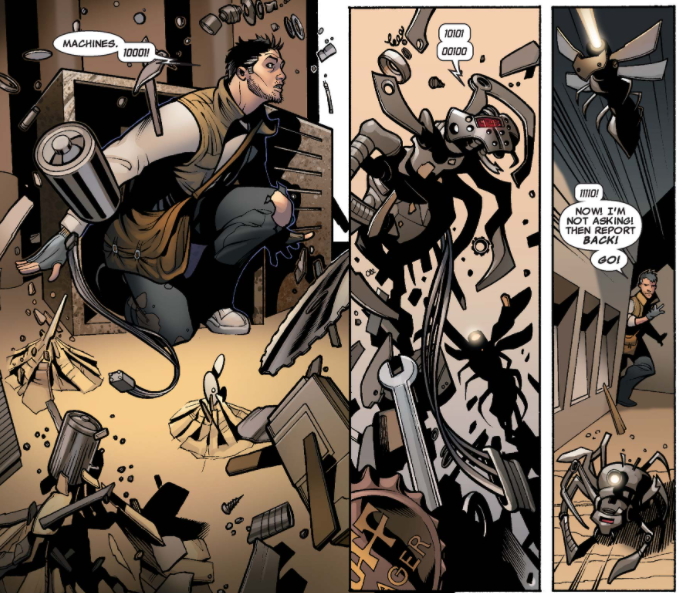
[Uncanny X-Men #505 by Matt Fraction, Terry and Rachel Dodson, Justin Ponsor, Joe Caramagna]
A widower, Madison soon became infatuated with Danger—perhaps straining the emotionally “chilly” nature of his powers, which is just dumb. At least we now have Wiz Kid, who just because he’s a technokinetic hasn’t proved a cold fish (Forge has also largely been stuck with this lame cliché).
Is Madison guilty of trying to miscegenate the machinic with the biologic on Krakoa? Certainly, Forge and Doug have been doing that—Wiz Kid too! Aside from being unlucky as prime brainwashing material (and once long ago killing his tragically deranged brother, also a mutant, with healing powers), it’s hard to imagine what this emotionally distant but otherwise ordinary guy might be guilty of that deserves Pit time (not that there’s any real justification for the Pit).
Melter, on the other hand, is a killer, albeit accidentally, what with his untrained molecular power of disintegration. Debuting in Paul Cornell and Mark Brooks’ excellent Dark Reign: Young Avengers mini from 2009, Chris Colchiss has seldom appeared since, and not since the fine Avengers Undercover maxi from Dennis Hopeless and Kev Walker (2014-2015). In his debut story, we discover his mutant awakening killed his parents and soon after a frightened elderly lady on the street. In Fraction’s Invincible Iron Man, the Mandarin hired him as a merc and gave him a suit to help channel his powers, but depicted there as more the clichéd villain, he’s mostly seemed reluctant to exploit himself, showing more moral restraint and self-doubt than most powered “hoods.”
Even so, something about his vague explanation to Oya regarding the reason for his recent condemnation clearly doesn’t add up.
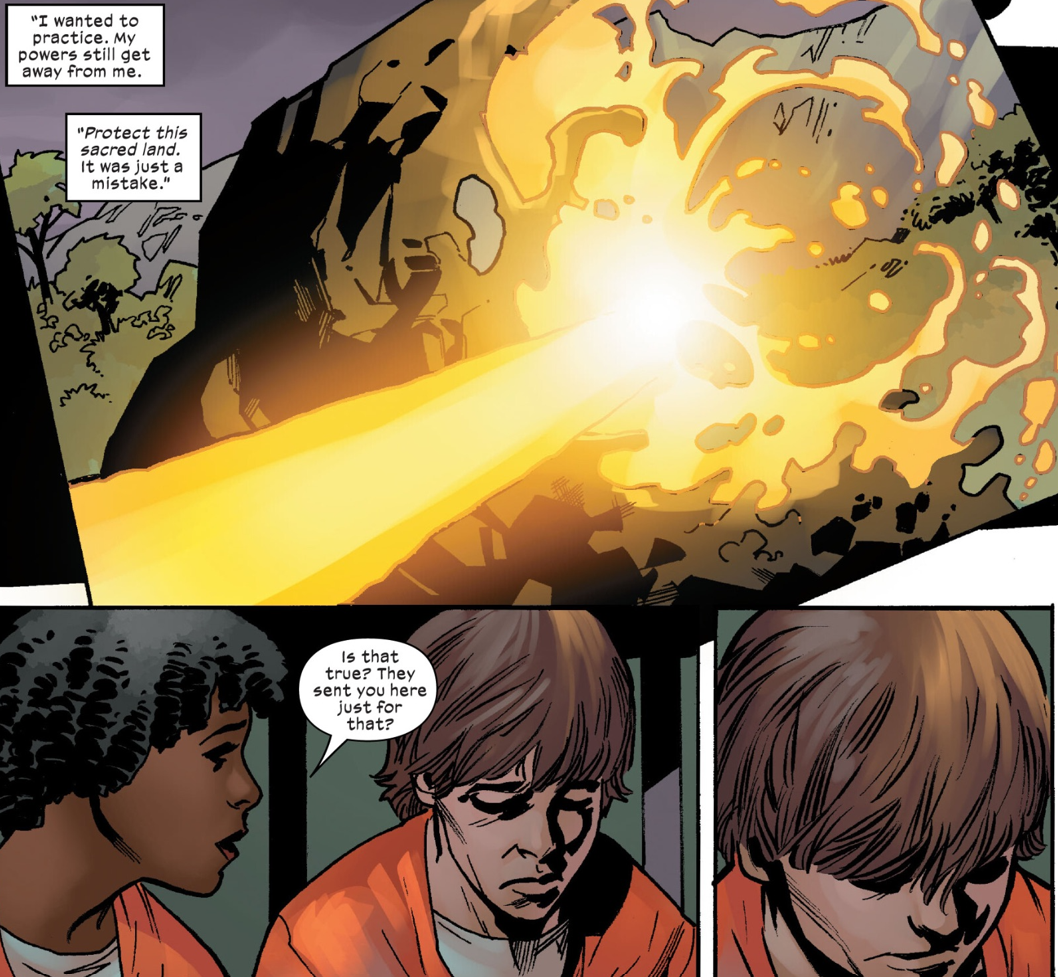
Navigating Through the Ruins Toward a Better Tomorrow
Now let’s go back and briefly meditate on this issue’s powerful opening epigraph apparently drawn from letters Frederick Douglass exchanged during 1855 with Southern slaveowners, who proved incapable of understanding the profound and lasting evils of buying, selling, and enslaving human beings. Of course, they couldn’t conceive of the very terms of Douglass’s argument when they couldn’t see those of African descent as human—obviously just ameliorating their own dirty consciences.
In recent years, this quotation—“It is easier to build strong children than to repair broken men”—is in use among criminal justice and community activists working to break the direct pipeline from childhood to jail that so many youths of color fall prey to, having been made vulnerable by the breaking of their communities through generations of strategic disinvestment, isolation and exploitative intervention from powerful actors coordinated around a tacitly white supremacist vision for American society. With such obstacles so often seeming insurmountable, much grass-roots activism of the past few decades has centered on the importance of positive childhood experiences as the locus for lasting social change.
So, why is LaValle using it here? I’m really not entirely sure! Sabretooth is certainly a broken man who cannot be repaired—both because he will not and that’s just what this IP’s brand is! What of the others? Who among them is truly broken? Surely, Nekra! Well, no, not necessarily. Each is redeemable in a way that Creed will never be.
Are these five conceivable as analogous to children, then, in some way? That is, can they still be molded into something stronger than they have been throughout their publication history? This is a stretch unless we focus on the three who were still in childhood when they made their comics debut—Nekra, Oya, and Chris Colchiss the Melter. They remain relatively inchoate, certainly compared to Creed. But what of Madison Jeffries—too old to be amenable to repair? And unknown before now, Third Eye has yet to be shaped but seems somewhere in the middle age-wise.
Since none of these characters seem broken, maybe they’re here in this book to be shaped by LaValle—even as their experience under Sabretooth’s tutelage may threaten to break them. Obviously, it’s more likely they keep paying for falling in with Sabretooth than making anyone else pay for their time in the Pit.
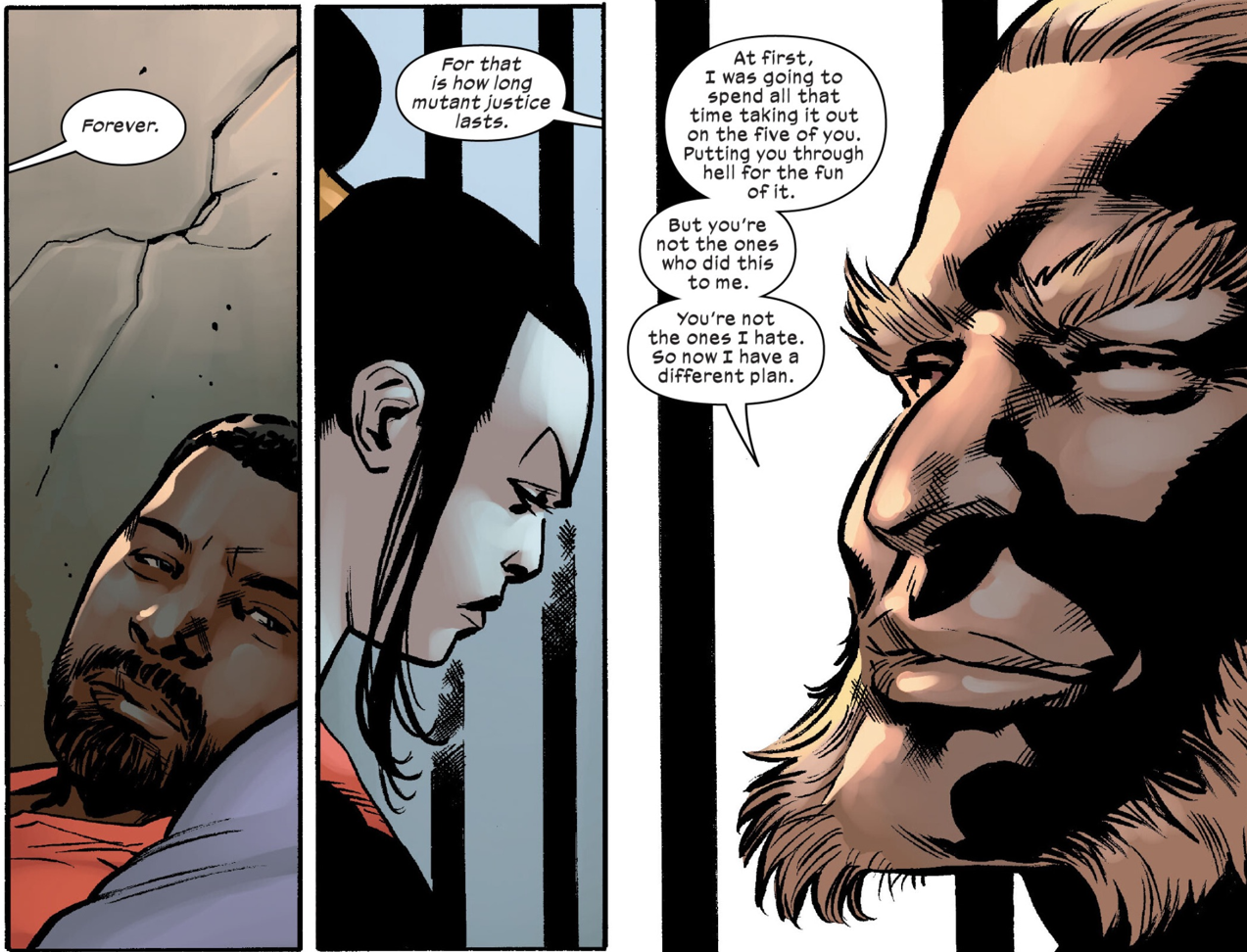
It’s clear that the ethical crime Xavier and Magneto are guilty of here is condemning these five to exile without recourse to any positive shaping guidance from without, left instead to a broken man’s attention, which would no doubt turn them into his human shields at best and damaged converts and proxies at worst.
For anyone who knows their Paradise Lost, Satan may be the coolest, most interesting character in a story that without him would be utter dullness, but it’s impossible to lose sight of how pitiable his wounded ego is, the jailhouse he’s made of his own stricken conscience. I hope these five find a different way, not as angels, but like everyday wayward people, stumbling through the dark but knowing they’re not alone.
But first, they really do need to get out of the Pit! And when the time comes, it’s clear that the five new inmates intuit that Xavier surely doesn’t understand the Pit’s true nature—which may prove Xavier’s saving grace, despite his moral stupidity.
NEXT: X Lives of Wolverine #5


Leave a Reply